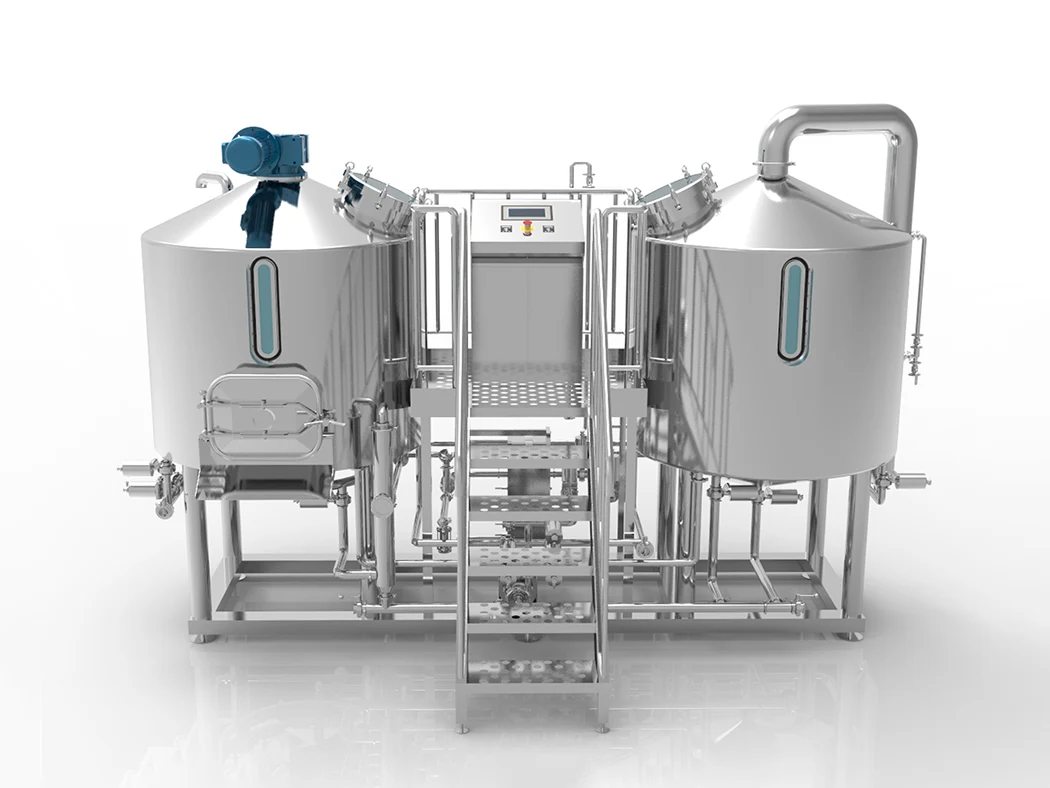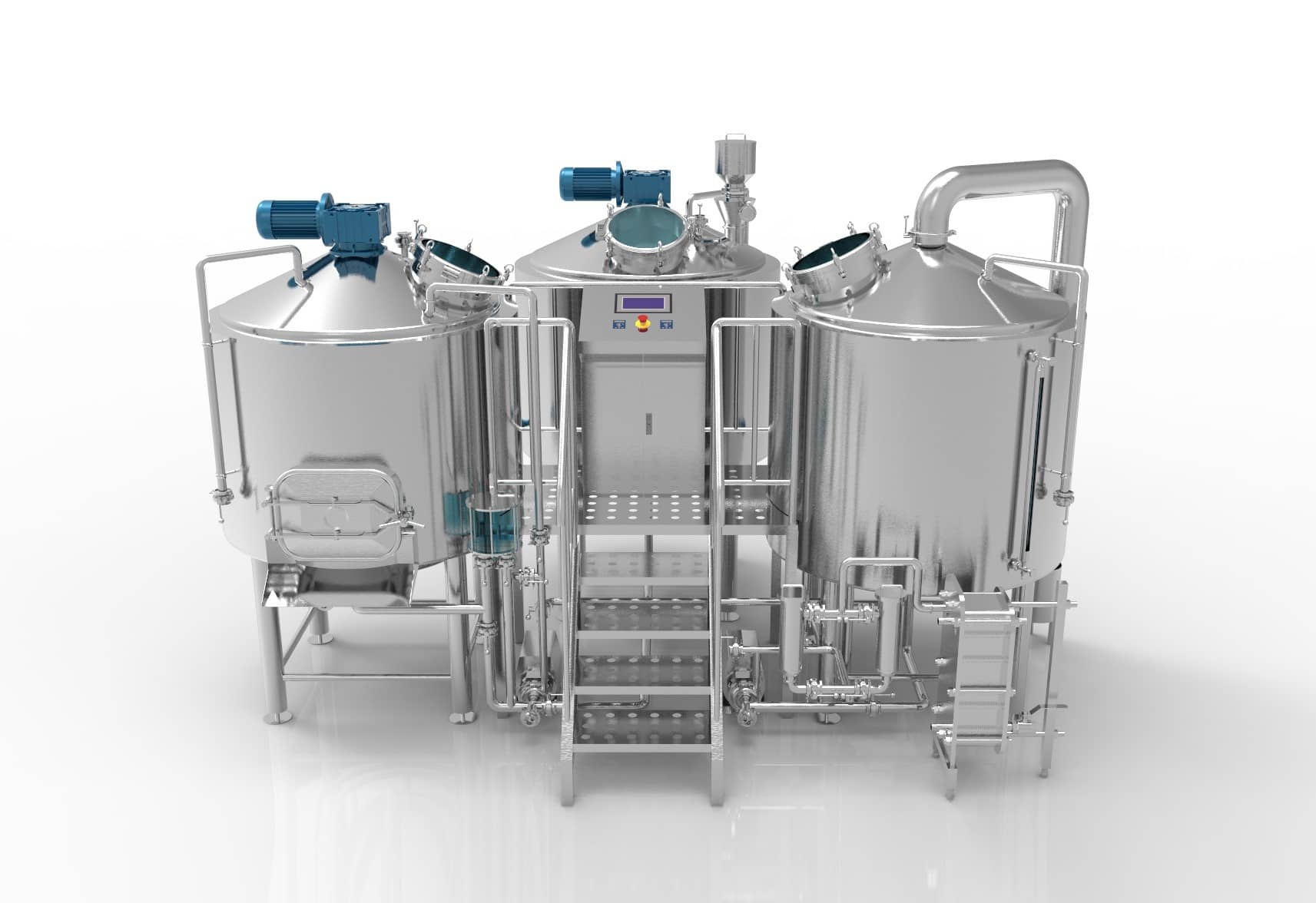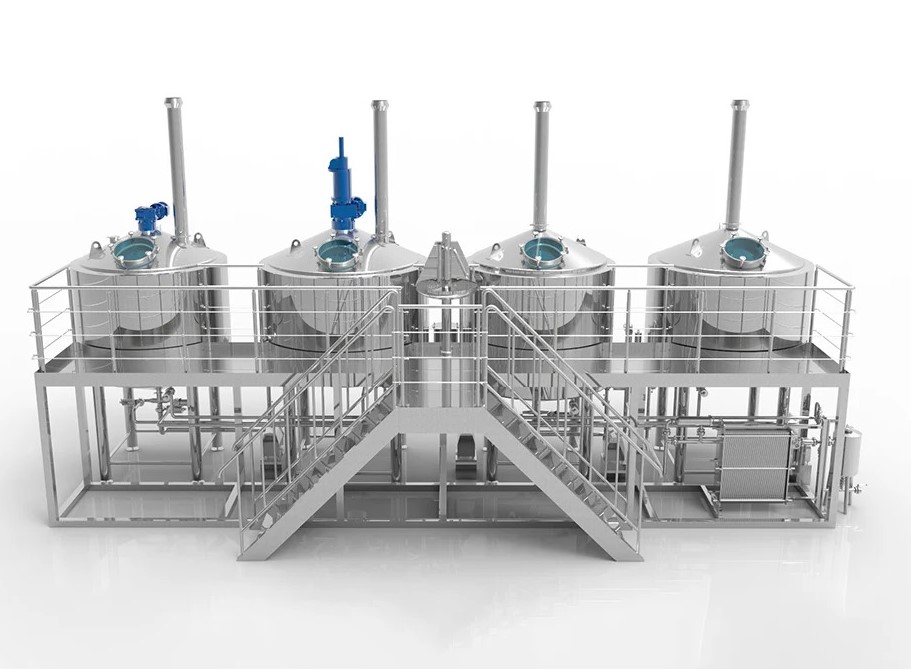Overview of small beer fermentation tanks
Small beer fermentation tanks are fermentation containers designed for home brewing. The capacity is generally between 5L-100L and is suitable for home environments with limited space. Its main function is to provide a sealed and controllable fermentation environment, allowing yeast to convert maltose into alcohol and eventually form beer.
- Space saving: small size, suitable for home storage.
- Affordable: lower cost than commercial fermentation tanks, suitable for beginners.
- Easy to operate: suitable for beginners, easy to clean and maintain.
- Flexible brewing: can be used for different types of beer, some models support secondary fermentation.
- Optional temperature control: some models are equipped with temperature control devices to improve fermentation quality.
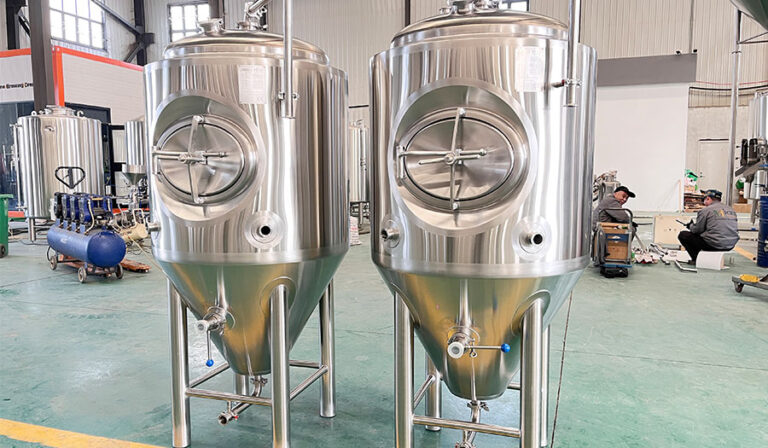
Advantages of small beer fermenters
Space-friendly, suitable for home environments
The volume of small fermenters is generally between 5L and 30L and can be easily placed in the kitchen, basement, or storage room without taking up too much space. Small fermenters are ideal for apartments or small households.
Relatively affordable
Commercial fermenters are often expensive, while small fermenters for home brewing usually cost from a few hundred to a few thousand RMB, which is suitable for beginners and craft beer enthusiasts to try brewing without a large investment.
Easy to operate, suitable for beginners
Many small fermenters for home use are equipped with easy-to-understand operating instructions and are relatively easy to clean and maintain, so even novices with no brewing experience can easily get started.
Flexibility can be used for different types of beer
Whether it is ale, lager, or IPA, small fermenters can do the job. In addition, some fermenters also support secondary fermentation and pressurized fermentation, allowing brewers to try different brewing methods.
Flexibility can be used for different types of beer
Many small fermenters come equipped with thermometers or are compatible with temperature control equipment, making it easier for home brewers to control the fermentation process and ensure optimal yeast activity and flavor.
How to choose a fermentation tank suitable for home brewing?
Material selection: glass, stainless steel, or plastic?
- Glass fermentation tank: high transparency, convenient for observing the fermentation process, not easy to absorb odor, and can be used for a long time after cleaning. But glass tanks are heavy and fragile, and need to be handled with care, especially large-capacity glass fermentation tanks may not be suitable for beginners.
- Stainless steel fermentation tank: It has excellent durability, and antioxidant properties, and is easy to clean, making it the first choice for professional brewers. Stainless steel tanks can also effectively isolate light to prevent beer from being affected by light oxidation and affecting the flavor. However, its price is high, and due to its opacity, brewers cannot directly see the fermentation process.
- Food-grade plastic fermentation tank: light weight, low price, suitable for novices or people with limited budgets. However, plastic materials are easy to scratch, and long-term use may accumulate miscellaneous bacteria, and may also absorb the taste of beer, affecting the quality of the next brew.
Capacity
The capacity of a home fermentation tank is usually between 5L and 30L. Choosing the right capacity depends on your brewing frequency, demand, and storage space.
- 5L-20L: Suitable for beginners, small-batch experimental brewing, or brewers who want to try different recipes.
- 20L-50L: Suitable for daily drinking in general households, can meet the drinking needs of one person or a small family for several weeks.
- 50L-100L: Suitable for larger batch brewing, suitable for brewing enthusiasts who share with multiple people or have long-term brewing plans.
Generally speaking, novices can start with a 10L-20L fermentation tank, which will not cause waste due to excessive production and can also provide enough beer for family enjoyment.
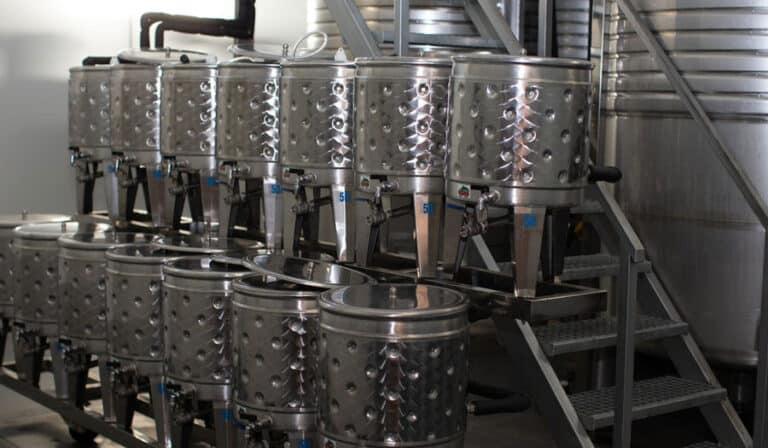
Sealing and fermentation lock design
Good sealing is essential to the fermentation process. It can prevent contamination by bacteria and ensure that carbon dioxide is discharged normally while preventing oxygen from entering and affecting the flavor of beer. When choosing a fermentation tank, you should pay attention to the sealing structure of the tank cover. It is best to choose a fermentation tank with an airlock. The airlock can release the carbon dioxide produced during the fermentation process while preventing the outside air from entering to avoid oxidation and pollution.
Some high-end fermentation tanks are also equipped with a pressurized fermentation system, which can control the fermentation pressure, thereby affecting the carbonation degree of the beer, making it closer to the effect of commercial brewing. If you want to improve the quality of your beer, it is recommended to choose a fermenter with a strong seal and air lock.
Temperature control ability
Temperature control is one of the key factors that determine the quality of beer. Different types of yeast have different temperature requirements. For example, Ale yeast usually works best in the range of 18-24°C, while Lager yeast requires a low temperature environment of 7-13°C.
If you live in an area with more stable temperatures or have a suitable fermentation environment (such as a basement), a regular fermenter may be sufficient.
If you want to control the fermentation temperature more accurately, you can choose a fermenter with a thermometer or a fermenter that is compatible with external temperature control equipment (such as a temperature control belt or a refrigerator).
High-end stainless steel fermenters are usually equipped with built-in cooling systems or compatible with external temperature control equipment, which can control the temperature more accurately, but the price is higher. For beginners, it is recommended to choose a fermenter with a thermometer or make sure that your fermentation environment can provide a temperature suitable for yeast fermentation.
Easy to clean
Cleaning and disinfection are the most important parts of the home brewing process. If the fermenter is not easy to clean, it may cause bacterial contamination, which will affect the flavor of the beer or even cause the entire batch to fail. Therefore, it is very important to choose a fermentation tank that is easy to clean.
- Large-diameter design: Large-diameter fermentation tanks are easier to clean manually than small-diameter ones to avoid residue accumulation.
- Stainless steel is easier to clean: Compared with glass and plastic, stainless steel has a smooth surface, does not easily leave dirt and scratches, and is durable and easier to disinfect.
- Removable structure: Some fermentation tanks have a removable bottom discharge valve or a removable lid, which can reduce dead corners and clean more thoroughly.

Types of beer fermentation tanks
- Conical fermenters: These fermenters have a conical bottom, making it easier to remove yeast and sediment. They are very popular among professional breweries and advanced homebrewers.
- Unit tanks: These are multi-purpose tanks that can be used for both fermentation and conditioning. Unit tanks save space and reduce the need for multiple vessels.
- Cylindrical-conical tanks: These tanks are a hybrid of cylindrical and conical shapes. They are favored for their ability to handle high-pressure fermentation.
- Open fermenters: These are traditional fermenters without a closed top. They are often used to brew specific types of beer, such as certain beers that need to be exposed to air.
Installation, Operation, and Maintenance of Beer Fermenters
Installation Guide
- Site Preparation: Make sure the space where you install the tank is clean, level, and able to support the weight when full of water.
- Tank Positioning: Position the tank vertically or horizontally, depending on the design. Ensure easy access to valves and ports.
- Plumbing and Electrical: Install the plumbing required for drainage and temperature control systems. Ensure electrical components are wired correctly.
Operation Tips
- Temperature Control: Use jacketed tanks or external cooling systems to maintain the correct fermentation temperature. Consistent temperature control is essential for yeast health and beer quality.
- Monitoring: Regularly check yeast activity, temperature, and pressure levels. Most modern fermenters come with digital readouts for easy monitoring.
- Yeast Management: Properly manage yeast by harvesting, repotting, or discarding as needed. Conical fermenters make yeast harvesting simple.
Maintenance Practices
- Cleaning: Regular cleaning is essential to prevent contamination. Use a CIP (clean-in-place) system if available, or clean manually with an appropriate disinfectant.
- Inspection: Regularly inspect for signs of wear, corrosion, or leaks. Replace gaskets, seals, and other parts as needed.
- Calibration: Ensure all instruments and control systems are calibrated regularly for accurate readings.
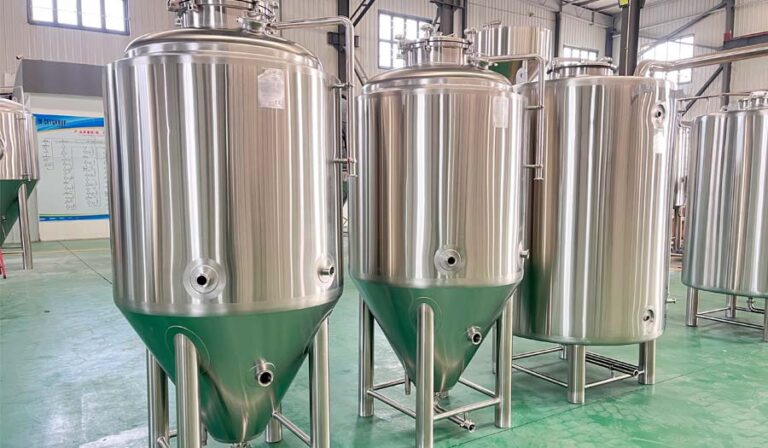
Overview of small beer fermentation tanks
Why do home brewers need a fermentation tank?
The fermentation tank is one of the most critical equipment in the beer brewing process. It provides a closed and suitable environment for yeast to convert maltose into alcohol and carbon dioxide. High-quality fermentation tanks can effectively prevent pollution, control temperature, and optimize fermentation, thereby improving the quality of beer.
Is the sealing of the fermentation tank important?
Very important! Fermentation tanks with poor sealing may cause oxidation and contamination, affecting the taste of beer. It is recommended to choose a fermentation tank with an airlock, which can prevent the outside air from entering and release carbon dioxide to ensure smooth fermentation.
What types of beer can the fermentation tank be used for?
Small fermentation tanks are suitable for almost all types of beer, including ale, lager, IPA, stout, Belgian beer, etc., just adjust the fermentation temperature and yeast type.
Does the fermentation tank need to be stirred or shaken?
It is not recommended to stir or shake the fermentation tank at will, which may cause oxidation or contamination. If stirring is required, it is recommended to do it before yeast inoculation and ensure that the equipment has been thoroughly disinfected.
Does the sediment in the fermentation tank need to be filtered?
Sediment mainly consists of yeast and protein, and it is usually recommended to avoid pouring it when bottling or transferring. You can use a siphon or filter to reduce the amount of sediment entering the finished beer.
Can the fermenter be used for secondary fermentation?
Yes! Many small fermenters support secondary fermentation, but make sure the fermenter is thoroughly disinfected. Secondary fermentation helps remove off-flavors, improve flavor, and enhance clarity and is suitable for brewing high-alcohol or aged beers.

